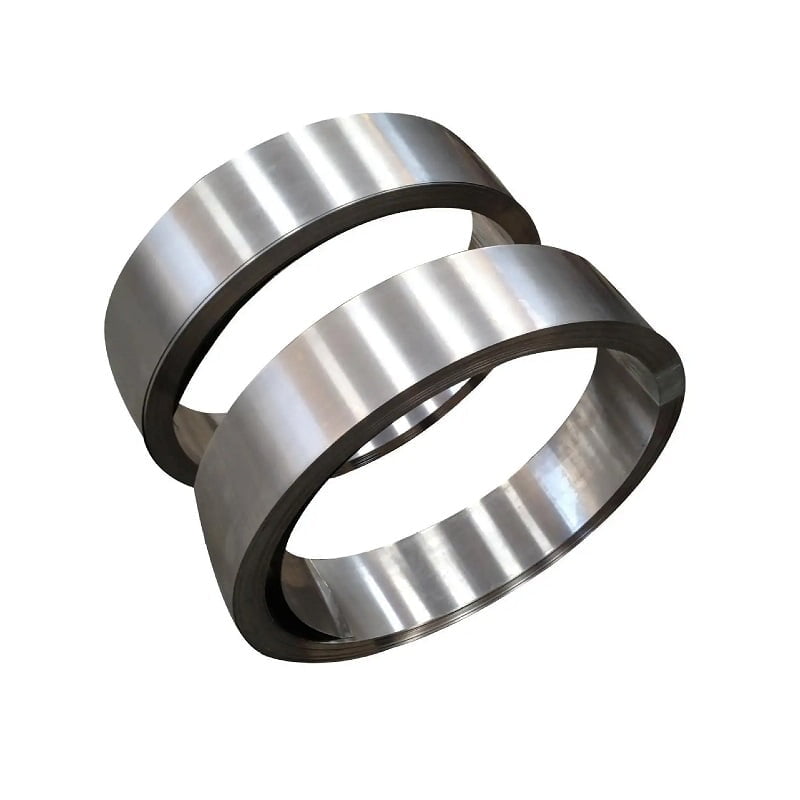
Nimonic e Inconel sono superloys a base di nichel altamente apprezzati comunemente utilizzati in vari settori per le loro eccezionali caratteristiche di prestazione. Gli aspetti chiave di queste leghe includono:
- Composizione: Entrambe le leghe sono composte principalmente da nichel, ma differiscono per le quantità di cromo, molibdeno e altri elementi, che hanno un impatto sulle loro prestazioni.
- Proprietà meccaniche: Mostrano un'alta resistenza e una buona duttilità, ma le loro proprietà specifiche variano, influenzando la loro idoneità per diverse applicazioni.
- Resistenza alla corrosione e all'ossidazione: Entrambe le leghe eccellono nel resistere alla corrosione e all'ossidazione, ma Inconel è particolarmente notato per la sua versatilità in ambienti aggressivi.
- Applicazioni: Nimonic viene spesso utilizzato nelle applicazioni aerospaziali, mentre Inconel trova un ampio uso nell'elaborazione chimica e negli ambienti marini.
- Fabbricazione e lavorabilità: La lavorabilità di queste leghe varia, con Inconel generalmente più facile da elaborare.
Composizione
| Lega | Nichel (Ni) | Cromo (Cr) | Ferro (Fe) | Molibdeno (Mo) | Cobalto (Co) | Titanio (Ti) | Alluminio (Al) |
|---|---|---|---|---|---|---|---|
| Nimonico | 63-70% | 15-20% | Bal. | 1-3% | 8-11% | 3-4% | 0.2-0,5% |
| INCONEL | 58-72% | 14-22% | Bal. | 2-10% | 3-8% | <1% | 0.2-1% |
Proprietà meccaniche
| Proprietà | NIMONIC 80A | Inconel 625 |
|---|---|---|
| Densità | 8,4 g/cm³ | 8,44 g/cm³ |
| Resistenza alla trazione (temperatura ambiente) | ~1000MPa | ~ 827 MPA |
| Resistenza allo snervamento (temperatura ambiente) | ~ 800 MPA | ~ 690 MPA |
| Intervallo di temperatura operativa | Fino a 1000°C | Fino a 1000°C |
| Allungamento (alla frattura) | 30% | 48% |
Resistenza alla corrosione e all'ossidazione
| Lega | Descrizione |
|---|---|
| Nimonico | Resistenza di ossidazione superiore ad alte temperature, ideale per i componenti della turbina nell'aerospaziale. |
| INCONEL | Eccellente resistenza alla corrosione in una vasta gamma di ambienti reattivi, rendendolo adatto a industrie aggressive di lavorazione chimica. |
Applicazioni
| Industria | Applicazioni nimiche | Applicazioni Inconven |
|---|---|---|
| Aerospaziale | Lame di turbina, camere di combustione | Sistemi di scarico, componenti strutturali |
| Produzione di energia | Turbine a gas, scambiatori di calore | Tubi del generatore di vapore, componenti del reattore nucleare |
| Olio e gas | Tubolari del lavaggio, componenti della raffineria | Macchinari di produzione di petrolio e gas, condutture |
| Elaborazione chimica | Reattori, scambiatori di calore | Apparecchiature di lavorazione chimica, valvole e raccordi |
| Applicazioni marine | Non comunemente usato | Piattaforme petrolifere offshore, applicazioni marine |
Fabbricazione e lavorabilità
| Lega | Tecniche di fabbricazione | Lavorabilità |
|---|---|---|
| Nimonico | Saldatura, lavorazione, casting | Moderato: può essere impegnativo per la macchina a causa dell'elevata resistenza. |
| INCONEL | Saldatura, lavorazione, formabilità | Buono: offre eccellenti caratteristiche di saldatura e può essere facilmente formata. |
Vantaggi
| Lega | Vantaggi |
|---|---|
| Nimonico | -Eccellente resistenza ad alta temperatura |
| - Resistenza all'ossidazione superiore | |
| -Progettato per applicazioni ad alto stress | |
| INCONEL | - Eccellente resistenza alla corrosione in ambienti reattivi |
| - Buone proprietà meccaniche in un ampio intervallo di temperatura | |
| - Applicazioni versatili in vari settori |
Differenze
| Caratteristica | Nimonico | INCONEL |
|---|---|---|
| Obiettivo primario | Applicazioni ad alta temperatura, in particolare nelle turbine aerospaziali e a gas. | Resistenza alla corrosione in vari settori. |
| Variabilità della composizione | Cobalt e titanio più elevati per una migliore resistenza ad alta temperatura. | Una gamma più ampia di gradi progettata per diverse applicazioni. |
| Lavorabilità | Più difficile da macchiare a causa di una maggiore resistenza. | Generalmente più facile da fabbricare e saldare. |
Questa analisi comparativa fornisce una chiara panoramica delle distinzioni e delle somiglianze tra nimoniche e Inconel, contribuendo a identificare quale lega può essere più adatta per applicazioni ingegneristiche specifiche.
